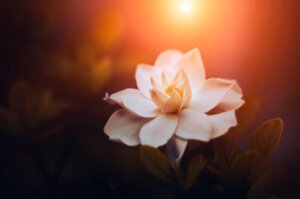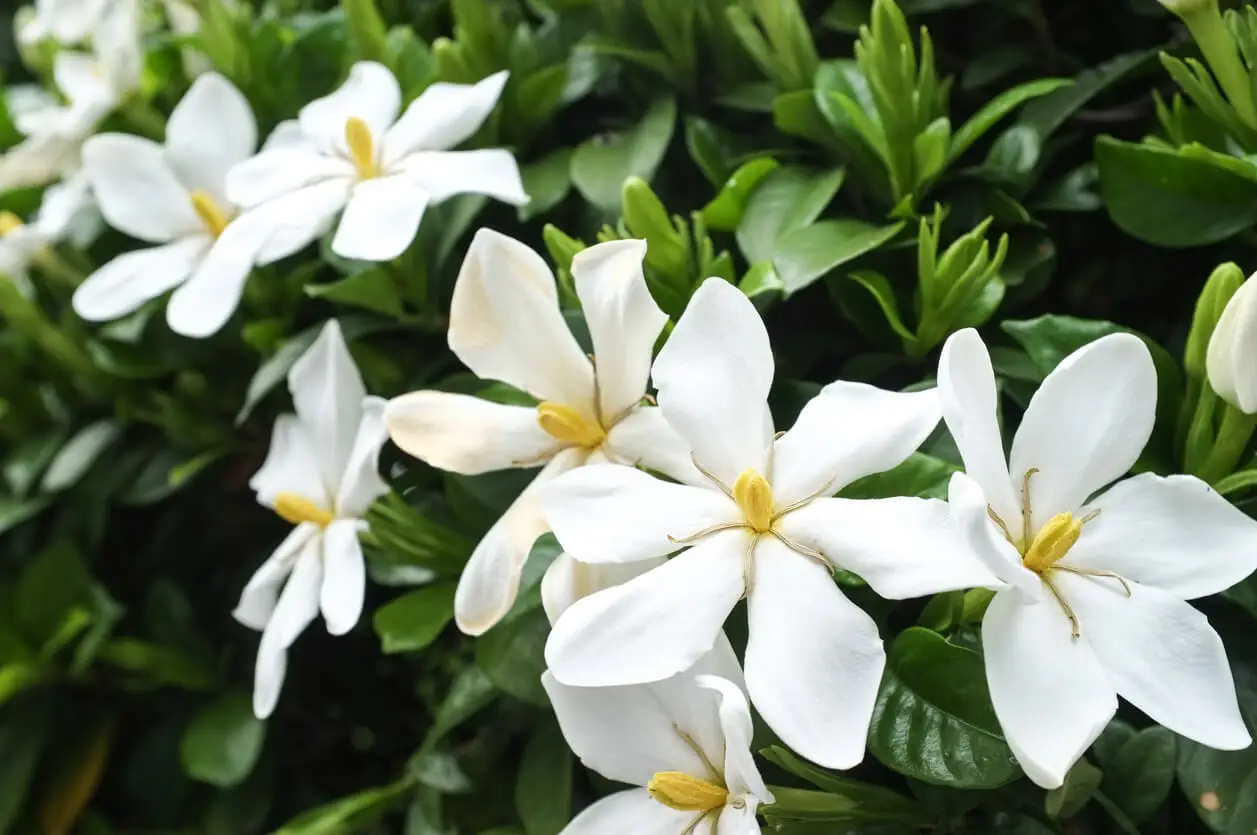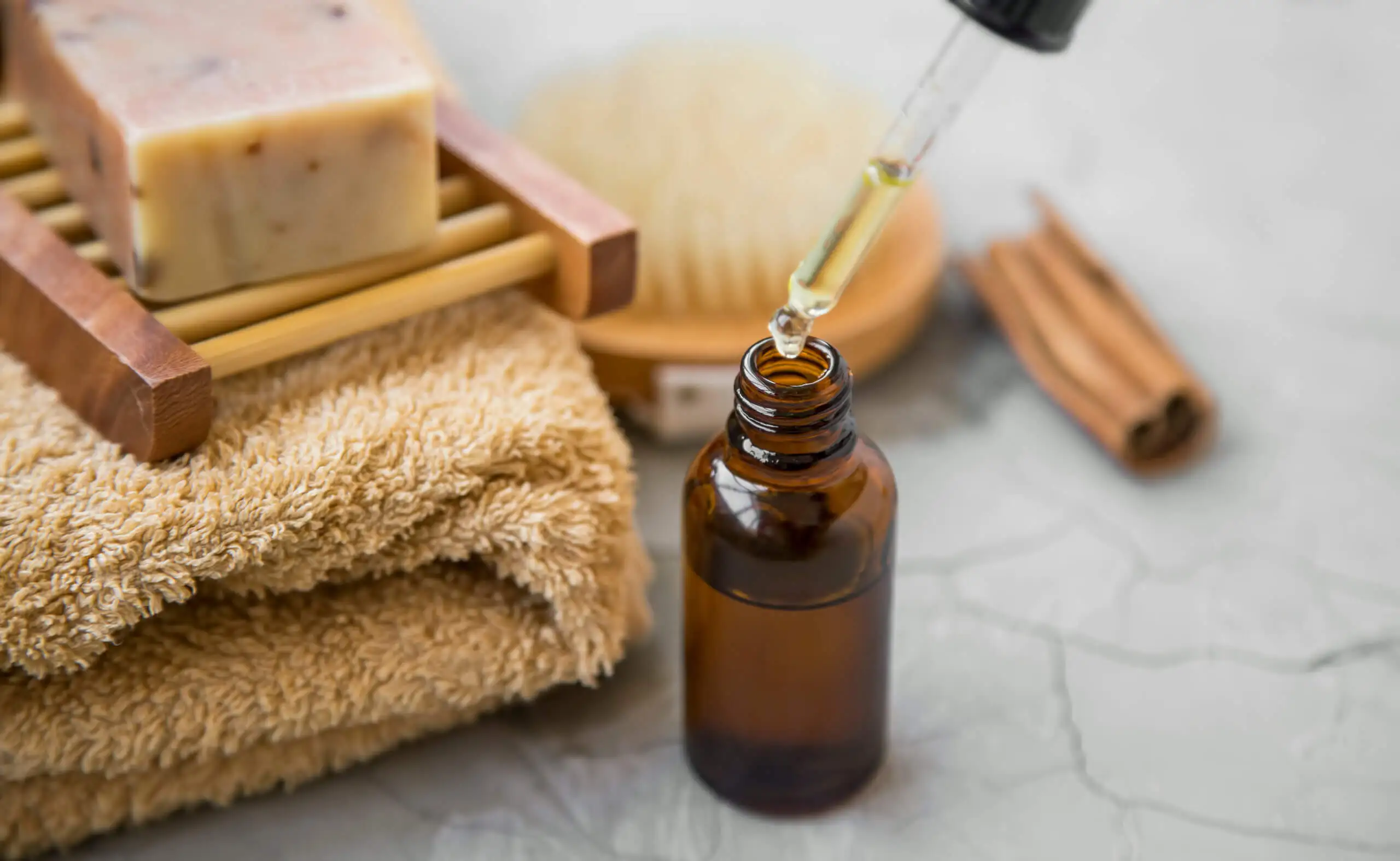7 Types of Gardenias and Their Characteristics

In all their varieties, gardenias represent beauty, elegance, harmony, and positive energy. These exotic plants grace yards and gardens and offer wonderful benefits.
The qualities of gardenia flowers also stand out in the pharmaceutical industry. Thanks to its exquisite fragrance, the species is used in the beauty industry as a base for perfumes, creams, lotions, and other cosmetics.
There’s a wide classification of gardenias, whose name is a tribute to the Scottish botanist Alexander Garden. We’d like to invite you to discover the magic of these shrubs here.
Gardenias: The plant with solitary flowers
Gardenias are plants that prefer to live outdoors, although they don’t like direct sunlight. Native to tropical Asia and southern Africa, they’re a part of the Rubiaceae family.
They’re also known as “the flower of China.” In fact, in this country, where these shrubs are endemic, they’re considered a symbol of subtlety and femininity.
Naturalists have described more than 200 kinds of gardenias, but only 134 types are currently accepted. The appearance of the China flower is very similar to roses and jasmine. It’s composed of 5 sepals, plus a crown of petals.
The color of its leaves is bright and dark green and is sometimes rounded or a combination of rounded and elliptic. In cultivation, gardenias rarely exceed one meter in height, but in fields, they can reach up to 2 to 8 meters.
If you have them inside your house, make sure to leave them in a single place, because they’re easily bothered by changes. Also, you should try to keep them in a warm environment, as gardenias don’t like extremely low temperatures.
They’re solitary plants that have given root to many different interpretations, depending on the tone of the flowers. For example, white flowers are associated with spiritual connection and purity. Meanwhile, the red ones allude to the secret love between two people.
The fruits that sprout from gardenias were used in Asia as anesthetics, sedatives, and infusions for anxiety and fever.
Types of gardenias and their characteristics
Each type of gardenia has certain characteristics that make it unique. Apart from the physical differences corresponding to the leaves, petals, height, and smell, these plants stand out for the utilities that we’ll expose below.
1. Jasmine gardenias
These are the most cultivated variety of gardenias. They were so named because of their similarity to the scent of jasmine.
They’re often known as “Indian jasmine,” “Cape jasmine,” and “gardenia Augusta.” They flower from June to September, with specimens of about 5 centimeters in diameter.
In China, this variety is used as a natural yellow dye. It’s also part of traditional medicine for its biological properties, as explained by the Journal of Food and Drug Analysis. According to the article, the plant provides the following benefits:
- It inhibits inflammation
- The gardenia plant improves sleep quality
- It has antioxidant qualities
- It causes a hypoglycemic effect
- The plant promotes antidepressant activity

2. Brighamii gardenias
This little tree is referred to as “Hawaiian gardenia.” It rises up to 5 meters, sporting oval leaves with white flowers measuring 2 to 3 centimeters in diameter.
The petals are tubular and have up to 6 white or pink lobes. Although they come from the islands of the Pacific Ocean, nowadays, these gardenias are only found in Maui, Hawaii, Lanai, Molokai, and Oahu.
3. Tahitensis
This is “the flower of Tahiti” and is found in the islands of the South Pacific and Vanuatu. These are gardenias with white or yellow petals that rise up to 4 meters and display lustrous green leaves.
They bloom from May to September, and a particularity of this classification is that Polynesian women often use them as necklaces or accessories behind their ears.
The benefits of these plants stand out in aesthetics. Monoï hair oil and other skin conditioners are extracted from them. The International Nomenclature of Cosmetic Ingredients (INCI Beauty) indicates that Gardenia tahitensis is present in 0.49% of beauty products, including sunscreens and suntan lotions.
4. Latifolia
Latifolias are popularly called “Indian boxwood” and “Ceylon boxwood.” The shrub is leafy and with tall stem bark.
The Journal of Experimental Biology and Agricultural Sciences states that these plants are of benefit in skin conditions. In the same line, a publication of the Journal of Drug Delivery and Therapeutics adds that these gardenias enter into the beneficial medicinal products to help in diabetes.
Like this article? We think you may also enjoy reading: 5 Different Ways to Make Flowers with Decorative Materials
5. Thunbergiana
This is a kind native to Africa that is 5 to 6 meters tall, and the stem is inflexible. The leaves are grouped by nodes that are smooth and whole.
As for flowering, it occurs at the end of winter or in spring. The petals display white or cream pigments, with diameters of 7 centimeters.
Other nomenclatures are “forest gardenia”, “wild gardenia”, “tree gardenia” or “white gardenia.” The fruit that emerges from this diversity is gray with white spots, has an oval shape, and is very fibrous.
A study reported in the newsletter Natural Products Research suggests that the methanol extract of thunbergiana exerts antiplasmodial activity, which may support its use in the treatment of malaria.
6. Gardenia Nitida
Gardenia nitida is a species that flowers throughout the year, but sporadically. The appearance is stellate tubular and its leaves are so shiny that they look like wax. These flowers are native to the African tropics and are endangered.
Because of this status, the Royal Botanic Gardens, Kew, through the Adopt-a-Seed program, promotes the collection and storage of this flower in the Millennium Seed Bank.
7. Elata
This type of gardenia has its origins in the Philippines and Malaysia. It’s long in appearance and is also called “hook gardenia,” “lobi crab gardenia,” and “long flower gardenia.”

Growing and caring for different types of gardenias
Gardenias are propagated by seeds or cuttings. They thrive in warm environments, at least 18 °C.
Even if it is young, it is good to prune it to remove the wilted parts so that it flowers in full bloom. But don’t cut off all the leaves, as it is through these that the roots are fed.
Extra recommendations are as follows:
- Transplant in the spring.
- Water with warm water and a touch of vinegar.
- Wet the leaves with a sprayer three times a week.
- Use potting soil with an acid pH, moist and with iron content.
- Use fertilizer for acidic plants, adhering to the manufacturer’s guidelines.
We think you may also find this article interesting: Man Plants 1000s of Flowers for Blind Wife in Act of Love
Diseases that all types of gardenias can suffer from
It’s important to prevent the branches from touching the ground, because they run the risk of infections. This kind of plant requires enough moisture; otherwise, a mealy bug proliferates. Another disease a gardenia is prone to is whitefly contamination, especially if it lives in yards and gardens.
Prevent mite, aphid, and mealybug attacks by spraying plant disinfectant laced with soap. If the China flower has premature leaf drop, it’s due to excess humidity. On the other hand, dullness is due to a lack of light. When it turns yellowish, this is due to watering with non-calcareous water.
All cited sources were thoroughly reviewed by our team to ensure their quality, reliability, currency, and validity. The bibliography of this article was considered reliable and of academic or scientific accuracy.
- Ansari F, Dhakad S, Dubey B, Jain A, Joshi A, Khare S. Análisis fitoquímico, actividad antioxidante y antiinflamatoria de la corteza de Gardenia latifolia. Revista de Administración de Fármacos y Terapéutica. Vol. 9. Núm. 1. pp. 141-145. Estados Unidos; 2019. https://www.mendeley.com/catalogue/f3d3fe5f-3990-3776-9976-f6e057afd503/?utm_source=desktop&utm_medium=1.19.4&utm_campaign=open_catalog&userDocumentId=%7B972ff03a-4f7f-43f0-8584-9c9607e9864f%7D
- Banco de semillas del milenio. Real Jardín Botánico de Kew. Reino Unido. https://www.kew.org/wakehurst/whats-at-wakehurst/millennium-seed-bank
- Bhardwaj S, Jain S, Rai A. Gyrothrix saragensis sp. Nov.: Un nuevo hongo hifomiceto en la planta medicinal gardenia latifolia aiton del centro de India. Revista de Biología Experimental y Ciencias Agrícolas. Vol. 9. Núm. 4. pp. 500-506. India; 2021. https://www.mendeley.com/catalogue/f8c29ba9-f0fd-3999-8d18-b1a07e3b60b2/?utm_source=desktop&utm_medium=1.19.4&utm_campaign=open_catalog&userDocumentId=%7B0c06ab30-0cd2-44c0-9794-ec2f1065ce15%7D
- Chung I, Lew S, Lim L, Lin W, Phang M, Wong K. Medicina China. Biomed Central LTD. Reino Unidos; 2021. https://link.springer.com/content/pdf/10.1186/s13020-020-00414-x.pdf
- Extracto de la flor de Gardenia Tahitensis. INCI Beauty. Francia. https://incibeauty.com/ingredients/2208-gardenia-tahitensis-flower-extract
- Familia Rubiaceae. Herbari Virtual del Mediterrani occidental. Universidad de las Islas Baleares. España. http://herbarivirtual.uib.es/es/general/familia/31/rubiaceae/generes
- Finger S. Dr. Alexander Garden, un linneano en la América colonial, y la saga de las “cinco anguilas eléctricas”. Perspectivas en Biología y Medicina. Vol. 53. Núm. 3. pp. 388-406. Estados Unidos; 2010. https://www.mendeley.com/catalogue/489ce428-1d2e-3631-8b7f-cb925cf512af/?utm_source=desktop&utm_medium=1.19.4&utm_campaign=open_catalog&userDocumentId=%7B44a24bb1-94d4-4758-ae59-cb2a34ab16b1%7D
- Ho C, Li S, Wang S, Xiao W. Química y bioactividad de Gardenia jasminoides. Revista de Análisis de Alimentos y Medicamentos. Taiwán; 2016. https://www.mendeley.com/catalogue/6ebd2dcf-62fa-3a22-8335-39612dfe85b9/?utm_source=desktop&utm_medium=1.19.4&utm_campaign=open_catalog&userDocumentId=%7B3291426a-21f7-45f2-892b-7e59eb040d72%7D
- Hoppe H, Swart T, Tajudden N, Van Herdeen F. Investigación fitoquímica y antiplasmodial de Gardenia thunbergia L.F. hojas. Investigación de Productos Naturales. Reino Unido; 2021. https://www.mendeley.com/catalogue/35c6bd0f-3ebd-30f0-8e92-87145e64fde2/?utm_source=desktop&utm_medium=1.19.4&utm_campaign=open_catalog&userDocumentId=%7B8a59f5f8-c3e1-472c-a074-c5a06a81bc79%7D
- Hussein AA, Kafua L, Kritzinger Q. Actividad antifúngica de extractos de hojas de Gardenia brighamii. Revista Sudafricana de Botánica. Vol. 76. Núm. 2. pp. 411. Sudáfrica; 2010. https://www.sciencedirect.com/science/article/pii/S0254629910000852?via%3Dihub
This text is provided for informational purposes only and does not replace consultation with a professional. If in doubt, consult your specialist.








